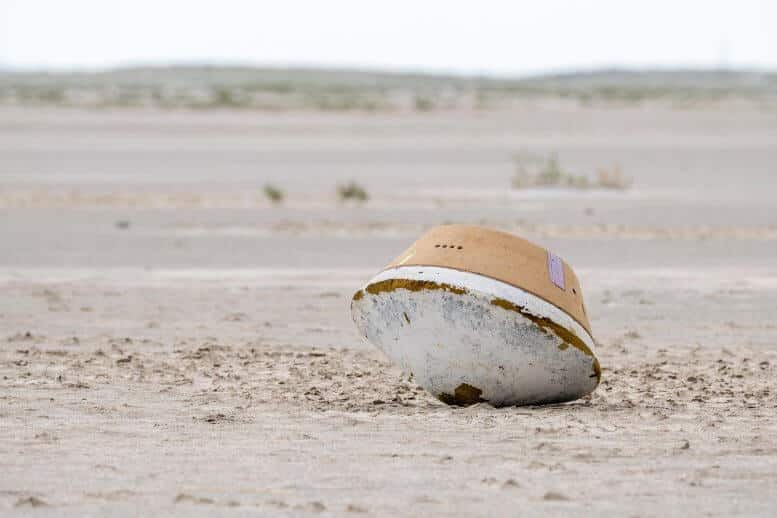OSIRIS-REx, whose name means "Surveyor for Research of Sources, Spectral Identification and Security - Solid Ground" is the first NASA mission to collect a sample from an asteroid. Scientists hope that the ancient material collected from the asteroid Beno in 2020 will provide a glimpse into the process of the formation of the Sun and the planets 4.5 billion years ago

This coming Sunday - September 24, one of the most fascinating landings in NASA history is expected to take place. After a journey of billions of kilometers in outer space, NASA's OSIRIS-REx space probe will pass by Earth and release a capsule the size of a mini-fridge containing a sample of ancient space rock collected from an asteroid between Earth's orbit and Mars.
OSIRIS-REx, whose name means "Surveyor for Research of Sources, Spectral Identification and Security - Solid Ground" is the first NASA mission to collect a sample from an asteroid. Scientists hope that the ancient material collected from the asteroid Beno in 2020 will provide a glimpse into the process of the formation of the Sun and the planets 4.5 billion years ago.
Before the sample can do this, the capsule containing it must withstand high temperatures and the highest speed ever achieved by a man-made object entering the Earth's atmosphere. After entering the atmosphere at about Mach 12, the capsule may encounter winds, rain and other weather conditions on its way to the ground. Regardless of the weather, the capsule will land in Utah's Great Salt Desert, an arid desert landscape known for its extreme summer temperatures and salt flats, remnants of an ancient lake that cover the ground in cracked layers of salt.
While most of the emphasis will be on the technical aspects of the probe and capsule, a team of scientists and meteorologists will monitor the weather that could significantly affect the recovery of the capsule.
The capsule was designed to withstand all the weather conditions thought likely in Utah in September, but wind speeds are probably the biggest concern in any parachute landing. Wind speed and direction can affect exactly where the capsule will land within the 150 km by 35 km area allocated for it at the Department of Defense's training and testing area in Utah.
The capsule's final descent will begin when it separates from the OSIRIS-REx probe and will enter Earth's atmosphere over the West Coast about 4 hours later. At supersonic speeds, the 45 kg capsule will rely on an atmospheric penetration system that includes a heat shield made of insulating material developed at NASA's Ames Research Center. The material was designed to withstand extreme temperatures.
On the morning of September 24, while flying east at about 3,000 km/h, the capsule will deploy a braking chute and then a main circular chute closer to the ground to soften the landing. Unlike other designs, the round shape is less sensitive to winds and increases stability and drag as the capsule descends. This makes it less likely that it will drift off course, making it difficult to locate on the ground.
Once the capsule lands and is collected by a special team, it will be transported to a special laboratory at NASA's Johnson Space Center, where the sample will be preserved and studied. The historic landing will also be investigated, in order to draw lessons for future missions to space.
This is one of the most exciting landings that NASA has made, and it is expected to provide important information about the formation of our solar system billions of years ago. The scientists and engineers of NASA and the other parties involved hope that everything will go smoothly and that the precious scientific sample will be safely returned to Earth.
More of the topic in Hayadan:

4 תגובות
an asteroid not a comet.
https://www.space.com/39958-asteroid-bennu.html
Thanks. fixed
Buy the title - a comet and not an asteroid
In the title they collected a sample from an asteroid. In the body of the article they collected a sample from a comet.
As far as I know there is a difference between the two. No?